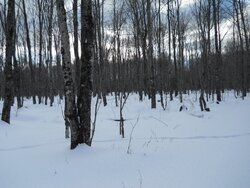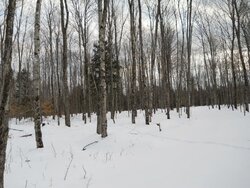In a search for how to select trees to cut for firewood I found this article.
http://northernwoodlands.org/articles/article/how_do_i_choose_which_trees_to_cut
Does that look like a pretty good guideline? I searched for an "Idiot's guide for choosing firewood trees" and didn't find anything (yeah, I really did). If you know of any other info that will help a novice I thank you in advance for sharing it.
My property (40 acres) is about 50% hard maple that I had select cut two or three years ago. I plan to snowshoe and mark some trees to cut for firewood. I will include some softwoods as I have read here of BK users being satisfied with softwood burns. I'd like to drop a few trees this winter that I can get to with the 4 wheeler early in the spring before the bugs, ticks and the clay softens up. Then I have to stay pretty much out of the woods till the last week in July when the ticks more or less disappear. Whatever I can drag up by the driveway early I can c/s/s while waiting for July.
Thanks.
Bill in the U.P.
http://northernwoodlands.org/articles/article/how_do_i_choose_which_trees_to_cut
Does that look like a pretty good guideline? I searched for an "Idiot's guide for choosing firewood trees" and didn't find anything (yeah, I really did). If you know of any other info that will help a novice I thank you in advance for sharing it.
My property (40 acres) is about 50% hard maple that I had select cut two or three years ago. I plan to snowshoe and mark some trees to cut for firewood. I will include some softwoods as I have read here of BK users being satisfied with softwood burns. I'd like to drop a few trees this winter that I can get to with the 4 wheeler early in the spring before the bugs, ticks and the clay softens up. Then I have to stay pretty much out of the woods till the last week in July when the ticks more or less disappear. Whatever I can drag up by the driveway early I can c/s/s while waiting for July.
Thanks.
Bill in the U.P.






